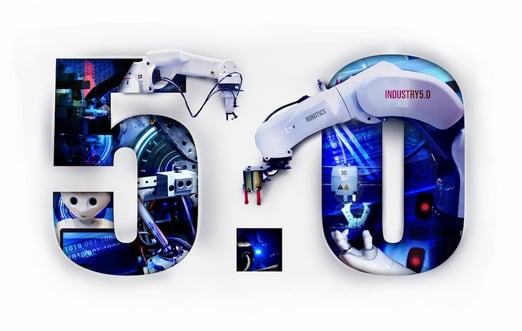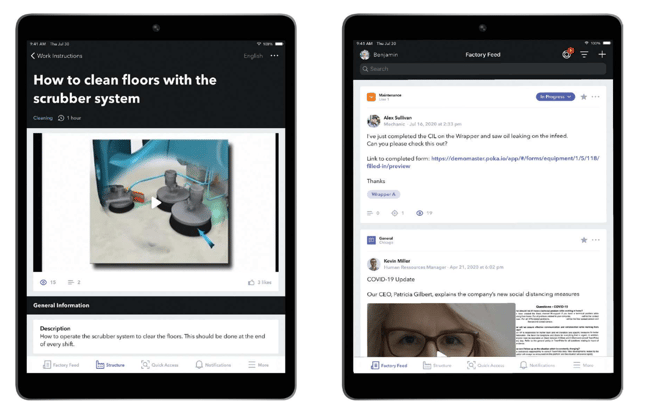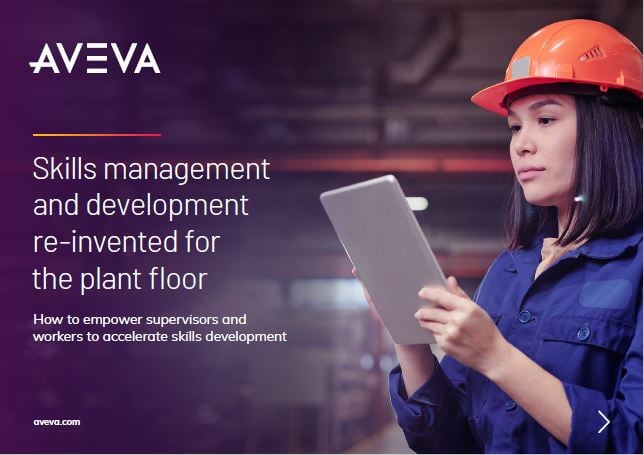Focusing on how the next development within industry won’t come through just technology, but from the operator and the skills they have. Skills management and knowledge sharing will re-invent plant floor operations and create the next most sought-after industrial asset, the connected worker.
What is industry 5.0 and why isn’t it about technology?
Technology is certainly part of the answer to a lot of issues both inside the industrial world and beyond. There are not many areas of daily or work life that haven’t been improved by deploying new technological advancements, and industry 4.0 – or industrial digital transformation - is a perfect example of this. Manufacturers advancing digital transformation benefit from more efficient, safer, and profitable operations through technology. As with most new initiatives, the requirement for some upfront investment means that it is easier for the large companies working at volumes where improvements of a few percent in efficiency or productivity result in huge savings. However, as such progress takes effect, it is clear that industrial digital transformation is a must for enterprises of all sizes to remain competitive – and those not digitally transforming will eventually fail.
So, what will industry 5.0 look like? There is an ongoing discussion about what form the next industrial revolution will take. On one hand, theories are delving into further technology capabilities focused on customer customisation. On the other side of the argument are those looking at the relationship between the human worker and machines. We have our own thoughts at SolutionsPT, one that aligns both sides of that argument and is simultaneously about - and not about - technology.
Confused? Stay with us and find out how industry 5.0 will be centred around the Connected Worker.

What is the Connected Worker?
Manufacturers already understand that connecting workers on the factory floor with those back in the control room saves time, energy, and resources. This has been known and happening at an increased rate ever since the worlds of IT and OT converged at the outset of industry 4.0, but just being in contact is not enough. To create a Connected Worker, both parties need access to the same information at exactly the same time, but this data has to be tailored to each person’s individual needs. A true example of a Connected Worker would be them approaching a machine to diagnose a fault, using Augmented Reality. The worker might then hold up a tablet or mobile device over the machine and gain valuable insight, for their job function. This wouldn’t be possible without large data sets and associated essential information that is held in the control room, or on an Edge Computing platform. If the worker on the factory floor needs assistance in identifying an issue, they would have the capabilities to call in the right expertise remotely, via the same device they are using for the assessment, sharing a real time video. The remote worker, of course, could be anywhere in the world and would also be able to securely access the machine data in – or close to – real time.
Connected Workers can bring new levels of teamwork to a business. Each individual has the tools they need to complete their tasks in the most efficient way, unplanned downtime is reduced through efficient maintenance practices, data is recognised as an asset for company-wide improvement and every person has a direct link to the control, automation and machinery within the facility. Finally, each human worker has more time to spend on their skilled specialty and, most importantly, share those skills with new members of the team. In this way, the Connected Worker directly tackles one of the most prominent issues within industry, the skills gap.
What is the skills gap?
In a nutshell, the skills gap relates to the lack of skilled workers entering the workplace to replace an aging workforce with relevant experience. With nothing in place to harness the knowledge leaving industry, the issue is only going to get worse.
This is not an isolated issue, 78% of manufacturing leaders are worried about an aging workforce and training is now the top investment priority for 74% of manufacturers. Only a tiny 4% of workplace learning is formal and a worrying 84% of quality costs are caused by worker errors.
A Connected Worker needs less initial training in their job role because they have real-time access to important data and a direct line to the experts that could solve any issues they may encounter.
Take a look at a recent webinar where I talked though AVEVA's new collaboration tool AVEVA Teamwork, a centralised application for skills management and training.
What is AVEVA Teamwork?
Implementing training is the starting point for many companies but to truly solve the skills gap, industrial enterprises need to implement skills development, knowledge sharing and a collaborative approach across the company. Achieving all of this and reducing those weeks, sometimes months, that it takes to get new staff members up to date with the complex industrial equipment can be done through AVEVA Teamwork.
AVEVA Teamwork enables industrial organisations to implement skills development through different avenues from knowledge sharing to collaboration management in all forms, whether that is training videos or eased communication. Focused on reducing the time it takes to get workers up to speed, Teamwork creates a digital knowledge repository, standardising and storing best practices and gathering the detailed process knowledge before members of the workforce retire.
With workers collaborating and supervisors watching all in real time, site owners are expected to see a reduction in training time by 50% directly leading to an 18% increase in worker productivity.

Technology will continue to advance; this is a certainty. Machines and automation will develop new capabilities and each technological improvement will promise new efficiency benefits. What won’t change is that efficiency on the factory floor will always be tied to the most important element of a facility, the people. What AVEVA Teamwork does is digitalise that valuable information held in the heads of the aging workforce and presents it in a form most beneficial for the next generation of digital natives. The skills gap is a growing problem and steps have to be put in place now to address it, this isn’t a case of being competitive, it’s a case of still being operational for years to come.
As I said at the start, the next industrial revolution will not be centred around technology. It will rely on it absolutely, but the true revolution comes from a Connected Worker, one that has a wealth of knowledge at their fingertips with the opportunities to develop skills and rapidly train new additions to the workforce. 




